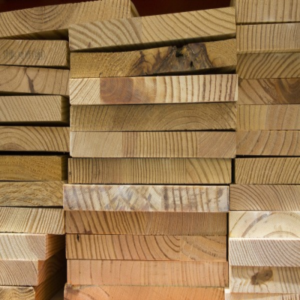Seasoning To Prevent Defects In Green Wood

Basics of Lumber Drying
This publication provides information on some of problems and basic principles involved in seasoning lumber, wood disks and other small pieces of wood. It is intended to help individuals who would like to season small quantities of wood inexpensively and without sacrificing quality.
Small mill owners may also find this information useful in the manufacture of dried wood products. In addition to information on the seasoning processes, this publication covers pre-drying treatments that reduce defects like mold, stain, decay, check, splitting and warp. The pre-drying procedures include treating wood with PEG (Polyethylene glycol-1000), salt paste, pre-surfacing, end-coating and dipping in fungicides. Some solar dry kiln issues are included. A
troubleshooting section deals with some potential pitfalls that can easily be avoided when drying wood. When wood is first sawn from a green log, up to two thirds of the weight of the wood is water. Much of this water must be removed from the lumber before it can be made into useful products. The moisture content (MC) of wood is defined as the weight of the water in the wood as a percentage of the weight of the oven-dried wood: The moisture content of green hardwoods may be more than 100 percent. Extra care is needed from the time a tree is felled until the lumber has been correctly seasoned for the intended use.
Most dense, native woods (like oak, hickory, sycamore, beech, walnut, ash and elm) require even more careful drying than pine or some of the other light woods (like basswood, yellow-poplar, soft maple or cherry). Extra care and proper seasoning, however, will pay off with these advantages:
1. Drying reduces the likelihood of insect infestations, mold, stain and decay during storage and use. Fungi and termites cannot grow in wood with a moisture content of less than 20 percent.
2. The shrinkage that accompanies seasoning is completed before the wood is put to use.
3. Drying reduces weight and increases most strength properties of wood.
4. Only relatively dry wood can be successfully glue jointed, finished, machined and treated with chemicals.
Principles of Wood Drying
Wood dries by movement of free water through fiber cavities, movement of bound water through fiber walls and movement of water vapor through wood fiber spaces. When wood dries to about 30 percent MC, or the condition in which the water has been removed from the fiber cavities but water in the fiber walls remain saturated, it is said to be at fiber saturation point (FSP).
Shrinkage of wood begins only when the moisture content drops below the FSP. Because wood is not homogeneous, it shrinks more along the growth rings than across the rings. The least shrinkage or swelling of wood is found in the longitudinal or “tree trunk” direction. These shrinkage variations cause drying defects like warping and checking. Shrinkage and swelling cease as the MC of wood approaches an equilibrium with its environments. Species of wood vary in the rate and amount of shrinkage. An individual piece of wood will display unique shrinkage or swelling patterns in the three planes of the wood. The three primary directions of wood movement are: tangential (perpendicular to the growth rings), radial (parallel to the growth rings) and longitudinal (parallel to the grain, the direction of the standing tree). Tangential dimensional change is often nearly twice that of radial movement for most domestic wood species. Longitudinal dimensional change is almost always negligible for most domestic wood species unless abnormal wood tissue is present.
For more information, click HERE.
Todd Shupe is the President of Wood Science Consulting, LLC. He is a a well-recognized expert on wood preservation, insects and fungi, wood decay and degradation, and wood species identification. He has a broad background in new product development, quality management, and marketing and sales in both the public and private sectors. For more information please visit DrToddShupe.com.

